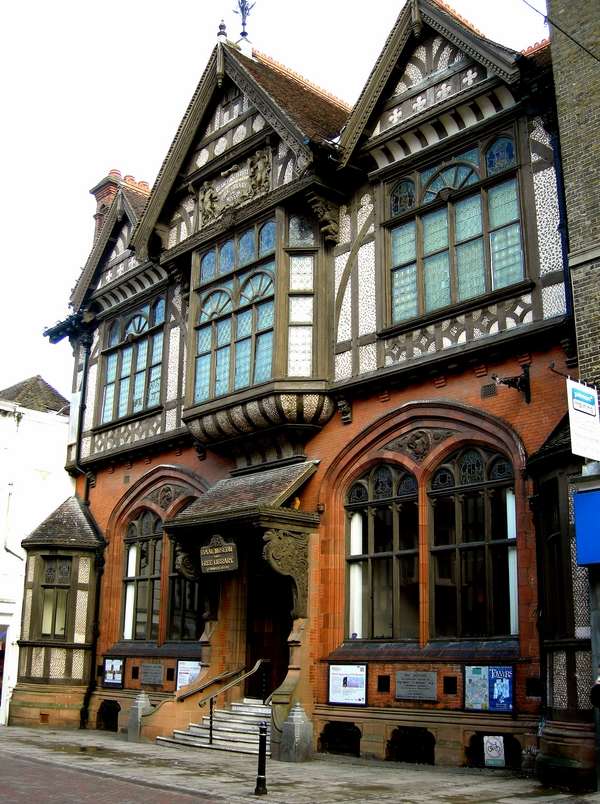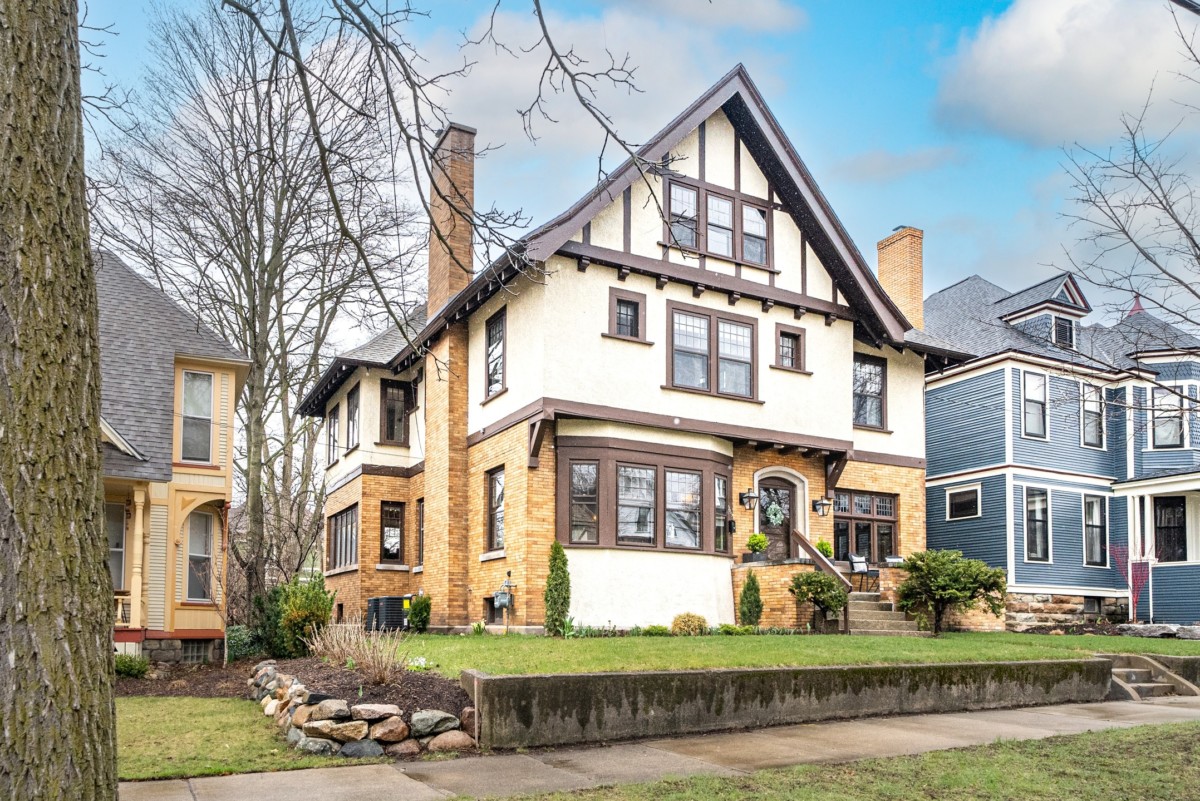Table Of Content

“Our whole goal with this space was basically to turn the lights on in the room, bring in the garden that’s outside, and kind of have an experience of a breath of fresh air,” Brosio says. A brick-walled patio became a party-ready outdoor kitchen and dining area thanks to Douglas R. Santicola of Outdoor Elegance. Santicola and Monique Wood installed Caesarstone countertops fabricated by Carlito’s Way Stone to create a functional space for outdoor entertaining. “I really feel like the dining room is a forgotten room,” says the designer, who set out to prove how vital the space is to a home. The room is anchored by a Riva 1920 table made with the wood of a 50,000-year-old Kauri tree, which Levine surrounded with seating for 12. Another seating area with views of the garden was designed for more intimate dining, games, or meetings, and it’s illuminated by a Murano glass chandelier.
Top Characteristics of Tudor Architecture
Due to the complex nature of renovating a Tudor, building a new home may be more cost-effective. To replicate a Tudor Revival-style house, incorporate as many of the above characteristics as possible, and merge the wonderful charm of the Tudor period with modern-day conveniences. The overall design lends a storybook or castle feel, with medieval-inspired details reflecting their European origin. The palace is adorned with oriel windows designed to add extra light and warmth to the interior spaces. The grand entrance, with its Tudor arches, is another hallmark of Tudor architecture, and the sweeping staircases, courtyards, and gardens reflect the grandeur of the Tudor era. Oriel windows are long and narrow and project out from the walls of the building, often supported by brackets or corbels.
Contemporary Tudor Home Examples
The oriel windows on the upper floor are an excellent example of the style’s love of ornate details and add to the building’s overall aesthetic appeal. Hampton Court Palace is a magnificent Tudor building that was built in the 16th century and was once the residence of King Henry VIII in the early Tudor period. The palace, located in London, England, features brick and stone details typical of Tudor buildings, and the high-pitched roofs and large chimneys provide a dramatic and impressive look. England’s Tudor period began in the late 15th century, marking the end of the medieval era. During this time, houses were most commonly built on wooden frames, with walls made from woven sticks covered in a clay-based mixture which was painted white. The exposed wood timbers were treated with hot tar to prevent them from rotting, giving them dark brown finish that was visible both indoors and outdoors, and creating the iconic half-timbered style that defines all Tudor homes.
Large Wooden Staircases: Statement Pieces that Create Distinction and Elegance
The dark wood walls were created by filling the spaces between wooden beams with a mixture of clay and straw. The walls were usually decorated with elaborate carvings and designs, such as heraldic crests and intricate geometric patterns. Tudor homes are characterized by their steeply pitched gable roofs, playfully elaborate masonry chimneys (often with chimney pots), embellished doorways, groupings of windows and decorative half-timbering. The latter is an exposed wood framework with the spaces between the timbers filled with masonry or stucco.
Tudor Elements in New Construction Homes
We already talked about exterior accents above, but interior wood accents may be even easier to implement. Things like wainscoting, paneling, built-ins, and crown and kick moldings are essential in a Tudor home. Chimneys are something else to consider, as they make up an important aesthetic portion of a Tudor home’s roofline. Fortunately, it’s very easy to build a decorative chimney, though a functional one will set you back quite a bit. The door on a Tudor home is essential, too; true to its asymmetrical style, it doesn’t have to be at the midpoint of the front of the house, but they’re often ornate enough to draw the eye anyway. Tudor doors often feature an arched top, and they’re usually framed by a contrasting material that makes the door stand out.
5 Home Styles That Look Like Haunted Houses
Gable ends were often decorated with verge boards whose decoration ranged from simple to highly carved. The Tudor style fell out of popularity around World War II when a resurgence of patriotism encouraged an appreciation for a more American style, that is, Colonial Revival. Tudor architecture was also expensive to build, not easily replicated and prone to maintenance issues. From 1890 to 1940, some American homes were built based on a medley of late Medieval and early Renaissance styles. Homes with these distinguishing characteristics were grouped under the heading of Tudor architecture. Area, Tudor homes (along with Colonial Revival) made up the largest portion of homes built during the 1920s and 1930s.
Before you decide to take on a Tudor renovation, understand the expenses that might be looming on the horizon. The windows on this solarium repeat the Gothic arches and diamond-shaped panes that prevail throughout the rest of the Tudor-style home. Great architecture often embraces its surroundings, but with this Tudor-style home, the formula is flipped. The stately home is embraced by its surroundings, with lovely lakeshore curving around the site on three sides.
The period saw immense change in England, and this is how the style evolved during the Tudor dynasty. They maintained the steep rooflines, gabled windows, and arched doorways of English Tudor houses, while stucco and brick facade replaced daub and masonry, and thatch gave way to slate roofing. Similarly, dark wood trim and faux timbers substituted for traditional heavy timber construction, as this new Tudor-style house was built using modern wood-framing methods.
Mid-Century Modern Style: 5 Things All DIY Designers Should Know
The style has stood the test of time and continues to capture the imagination of people from all walks of life. In this article, we will learn the fascinating history behind this timeless style and look at some of the most iconic examples of Tudor architecture today. Tudor architecture continued to pop up in villages throughout England until Elizabethan-Tudor architecture took over after 1558. It wasn't until centuries later that the design style was reborn in the United States. Alison is part of the content marketing team and enjoys writing about housing affordability and home interior design ideas. Her dream home is a cottage-style house with a chef’s kitchen and a cozy room to store and play vinyl records.

Unfortunately, the Tudor style never really took off in the United States and other cold countries. This is because the timber-and-stone construction was never suitable for insulation, and so it didn’t do well in cold climates. However, when insulation started to become used around 1800, it caused a phenomenon called the “Tudor Revival” where the style came back into favor. Now the home is the perfect space for the family to grow and enjoy for years to come‚ with five bedrooms and more square footage. Barrett adds that the homeowners are happy with the finish design, as it has better flow, a timeless design, and is a lot more functional for their family.

In Tudor times, the method was used by builders to make use of the small pieces of glass typically available at the time, but the technology continues to this day because it is so emblematic of the style. However, as the style originated in England’s damp and chilly climate, the total number of opening windows in a Tudor home is usually kept to a minimum to prevent heat loss. From the smaller cottage-style Tudors to the larger and luxurious house plans, Tudor homes come in a variety of sizes to suit small and large families. These homes range from around 1,500 square feet to 7,500 square feet with the majority averaging 2,500 square feet.
While Tudor architecture rose in popularity during the earlier part of the Tudor Dynasty, it somewhat fell out of favor when Elizabeth I came to power. During her reign, the regal, intricately detailed Elizabethan-Tudor architecture style exploded, showing emphasis on European Renaissance styles. Glenda Taylor is a BobVila.com staff writer with a background in the residential remodeling, home building, and home improvement industries. She started writing for BobVila.com in 2016 and covers a range of topics, including construction methods, code compliance, tool use, and the latest news in the housing and real estate industries. A nontraditional exterior color palette gave this one-story brick Tudor a fresh face. Various shades of green, including sage-painted brick and gray-green shutters, freshen up the home's traditional facade without compromising its style.
Designer Rachel Scheff used the home’s spectacular ceiling, woodwork, and stained glass as the inspirations for her fanciful, flora- and fauna-filled foyer. “It was one of my favorite rooms in the house because it was the one that had the most history preserved, and I wanted to really celebrate that,” she told AD PRO. For her Foyer of Enchantment, Scheff installed a custom mural by Hattas Art Studios, a John Richard chandelier dripping with glass leaves, a silk wall covering by Aux Abris, and organic furniture created with Amorph Studio. “I wanted you to feel like you were transported to another time and place,” Scheff says.
The store’s interior also features elements of the Tudor style, such as high-beamed ceilings and intricate paneling. The pitched roof also protected the home from the elements and provided extra space for storage. The steep pitch allowed the rain and snow to slide off the roof easily, and homeowners used the ample space underneath the roof for storage and additional rooms or living quarters.
Studio of Metropolitan Design adds pavilion to Tudor-style house - Dezeen
Studio of Metropolitan Design adds pavilion to Tudor-style house.
Posted: Fri, 22 Sep 2023 07:00:00 GMT [source]
Since a full-size Tudor house was too expensive to build, the Americans in the Northeast and Midwest turned to building or restoring the smaller Tudor cottages. You’ll find many of these historic grand houses in the US alongside the Stick-style and Victorian houses, with many of them having undergone total refurbishments and no longer featuring the recognizable half-timbering. The entrance of a Tudor home often features various decorative and safety elements that are arranged asymmetrically. To recess the door, thick masonry is used above it in order to prevent weather damage.
After the Industrial Revolution, homes were being built faster and more affordably than ever. For example, the American Foursquare was a popular type of home style because its symmetrical footprint was practical and fit comfortably on city lots. The floor plans had to be formatted in a way to make sense of the home's exterior. Because of this, these homes were more expensive to build and were found in more prominent suburbs.









